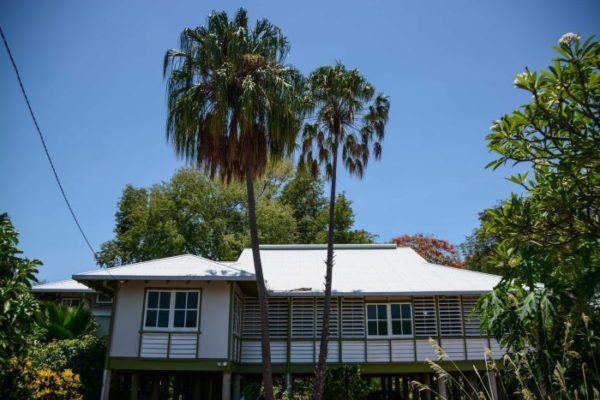Air Conditioning Dominates Many Top End Homes but There are Ways to Stop Power Bill Shock

Air Conditioning Dominates Many Top End Homes but There are Ways to Stop Power Bill Shock
Walk through Darwin’s residential streets at night and you will hear it: the low hum of air conditioners pumping cool air into homes during a sticky, humid night.
They are among the most energy-consuming domestic appliances, but are air conditioners and high power bills an unavoidable part of life in the tropics?
According to some architects, the rise of the air conditioner is one reason why fewer modern homes are designed to cool naturally.
“The best way to think about it is that before air cons were a standardised element to a residential building, the house worked as a machine,” Troppo Architects director Jo Best said.
The Burnett House in the city’s heritage precinct — with its large, breeze-permitting openings in walls and its long eaves to prevent walls retaining solar heat — stands as an example of regionalism in design.
Sadly, this kind of climate-responsive tropical housing is far from the style of those built in Darwin today.
“Once the air con comes along, the house can dumb down and the air con is the machine,” Ms Best continued.
“Of course air conditioners provide a service and people can use them as they like, but they have an embedded cost and an ongoing cost and I guess a lot of people are struggling to meet those costs now.”
Just how high are those costs?
The Northern Territory’s energy retailer, Jacana Energy, anticipates a 20 to 30 per cent rise in energy consumption over the sweaty end-of-year months.
“Essentially it’s pretty much all attributed to air conditioning, although there are other factors,” David Walker, Jacana’s executive manager for operations, said.
How to master your air conditioner
There’s no denying that living and sleeping would be uncomfortable without air conditioning in some Top End homes.
Even the Environment Centre NT’s sustainable living arm, COOLmob, sometimes turns the air conditioner on to stay cool around the office.
But they say you can take a number of steps to maximise the device’s efficiency and ultimately avoid a shock when the power bill arrives.
The first one is to set your air conditioner between 23 and 27 degrees — the range where most people are comfortable.
“Every degree that you lower your air conditioner actually increases your energy consumption by about 10 per cent,” Lou De Mattia told ABC Radio Darwin‘s Annie Brown.
“Try to keep it in that range where it’s quite comfortable but you’re not actually having to reach for a cardigan or something, because that’s something you really want to avoid.
Befriend your fan
Secondly, Jacana says the effects of a ceiling or standing fan — both comparatively low-consumption devices — can’t be underestimated.
“If you can run your air conditioner at a higher temperature level and get that cooling effect with air movement by a ceiling fan, then you’ll certainly reduce your energy consumption,” Mr Walker said.
And despite it seeming obvious to some, Mr Walker said a number of people were inadvertently adding dollars to their bills by failing to adequately seal rooms while the air conditioner was switched on or keeping them running in rooms that are empty.
“You’d be surprised how many people might have louvres that aren’t shut correctly; drapes that aren’t pulled across,” Mr Walker said.
Ms Di Mattia said you could also consider zoning off one living area to cool rather than the entire house, particularly as a large proportion of Darwin’s housing stock doesn’t naturally cool itself well.
Share Your Research, Projects or Developments Taking Place in Northern Australia
Submissions are now open for you to become a presenter at the 2019 Developing Northern Australia Conference, taking place from 11-12 July at Karratha Convention Centre.
Share your insight to a group of like-minded professionals dedicated to advancing our northern areas.


